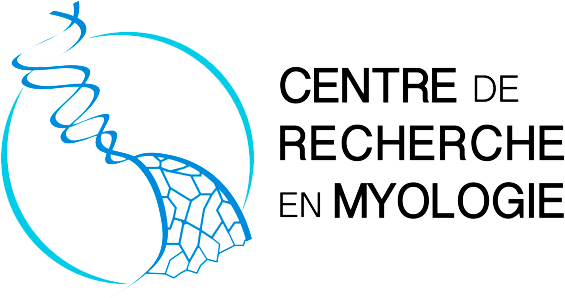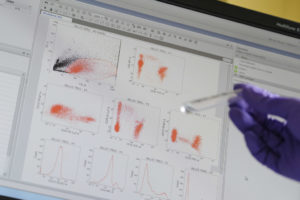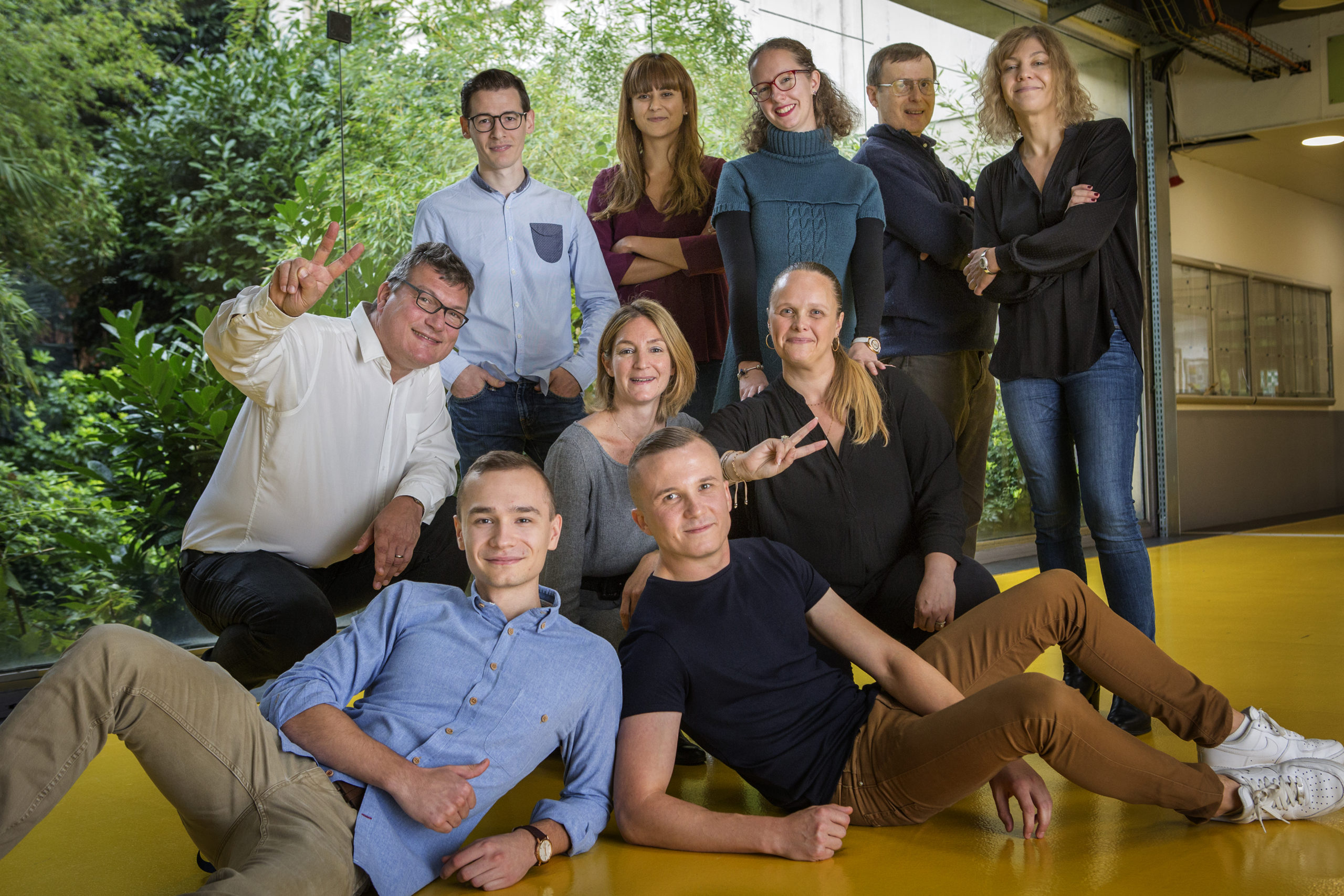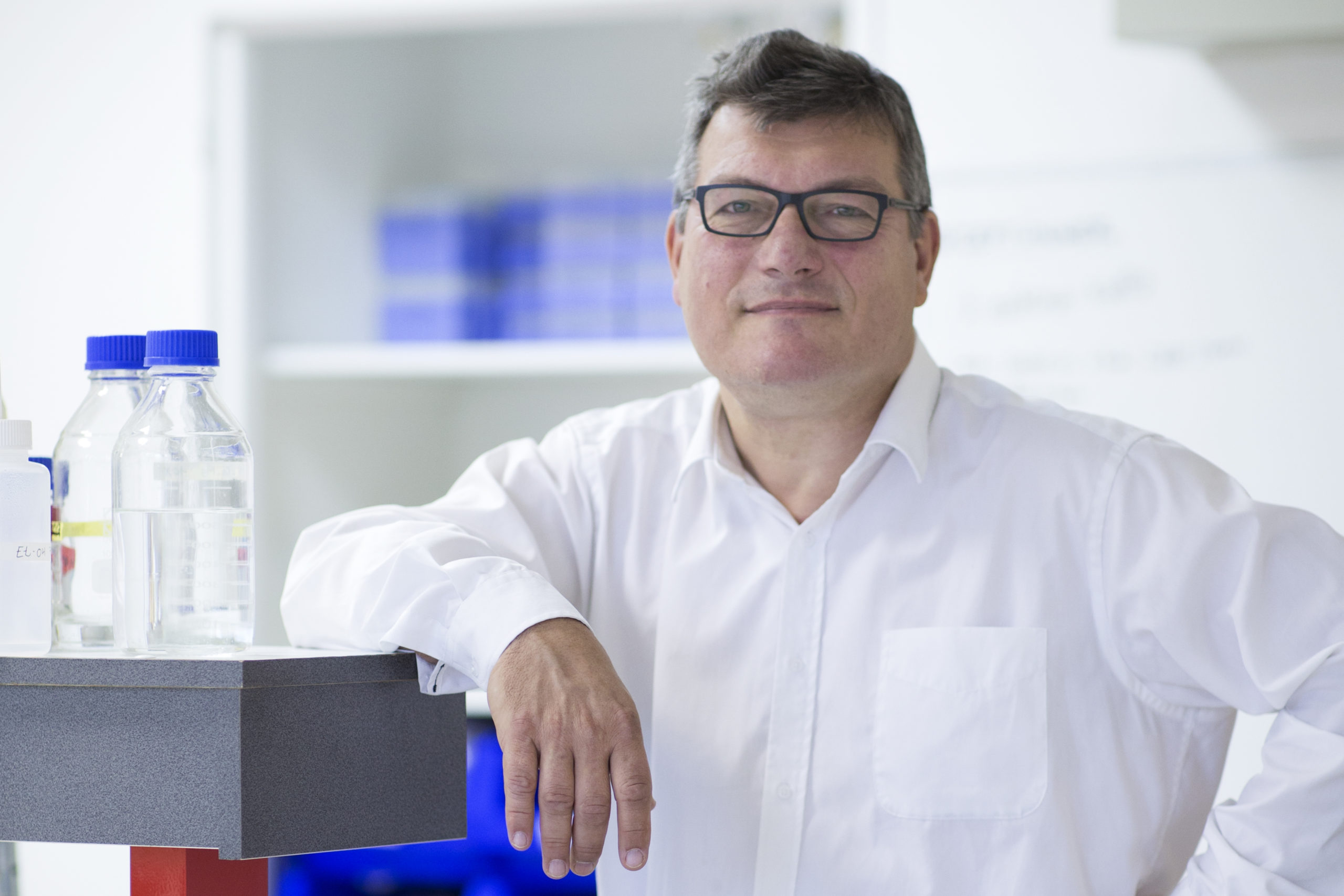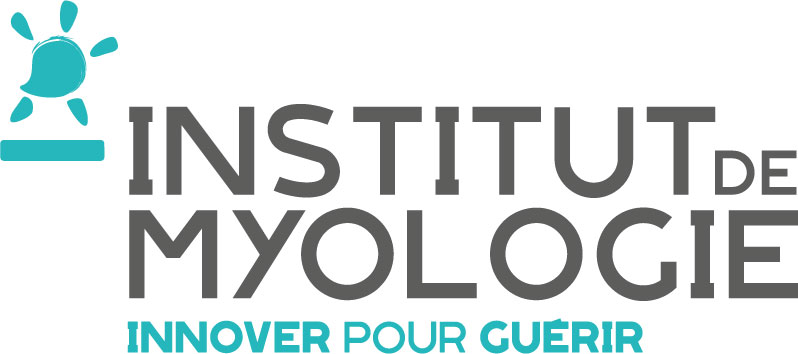Neuromuscular Connectivity in health and diseases
Our laboratory aims to understand the cellular and molecular mechanisms underlying neuromuscular synapse assembly and maintenance in physiological and pathological conditions.
The Neuromuscular junction (NMJ) is the contact zone between motor neurons and skeletal muscles. This synapse drives the precise initiation and control of motion. Therefore, much of our behavior and wellness relies on the appropriate functioning of this specialised structure. Neuromuscular transmission deficiency occurs in a large array of rare human diseases including channelopathies, congenital or acquired myasthenia and amyotrophic lateral sclerosis. Most of these pathologies are untreatable and life threatening with devastating economic and societal consequences in terms of loss of quality of life and of the burden of disability. The patients display complex clinical phenotypes mainly characterized by a profound muscle weakness and loss of mobility.
We combine unbiased screens and a large array of functional assays including quantitative morphological imaging, behavioral analysis and electrophysiology using mouse models and/or human-derived specimens to explore the complexity of the trans-synaptic mechanisms controlling neuromuscular connectivity. Our overarching goal is to improve physiopathological knowledge that can be used not only for molecular diagnosis and genetic counselling of families affected with the diseases of interest, but also to design new targets of therapeutic interest.
To achieve this goal, our team is built on an organization that favors tight interactions between practicing neurologists from the Paris Est French reference center for neuromuscular diseases and researchers/research assistants together with a large network of national/international collaborations to share knowledge and expertise.
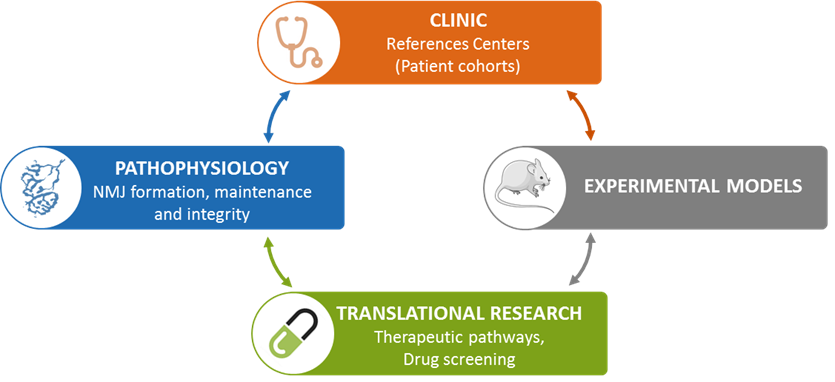
We defined three main aims of research:
1) Characterize the molecular determinants underlying NMJ assembly and maintenance (PI: Laure Strochlic/Julien Messéant).
We have recently identified a new trans-synaptic pathway at the NMJ and developed innovative tools using mouse genetics to dissect its molecular characteristics.
2) Understand how disruption of nerve/muscle communication leads to neuromuscular diseases such as myasthenia and amyotrophic lateral sclerosis (PI: Stéphanie Godard-Bauché/Gaelle Bruneteau).
Thanks to our clinical expertise and our national networks, we analyze the physiopathological mechanisms underlying the studied diseases in patients.
3) Modulate trans-synaptic function to restore appropriate synaptic connectivity in a pathological context as a basis for therapeutic interventions (PI: Bertrand Fontaine/Laure Strochlic).
We develop innovative pharmacological or genetic strategies that promote trans-synaptic communication and nerve/muscle attachment to mitigate NMJ disease symptoms to ultimately prevent or compensate the progression of the loss of motor function in neuromuscular diseases.
Key words: Neuromuscular Junction, Neuromuscular disorders, disease modeling mouse models, human derived specimens, quantitative imaging, therapeutic strategies.
Main collaborations:
- Rozen Le Panse and Sonia Berrih-Aknin (France)
- Arnaud Ferry (France)
- Cécile Martinat (France)
- Eric Krejci (France)
- Frédérique Charbonnier (France)
- Nathalie Sans and Mireille Montcouquiol (France)
- Laurent Schaeffer, NeuroMyoGene Institute, (France)
- Hanns Lochmüller, The Children’s Hospital of Eastern Ontario (Canada)
- Markus Ruëgg, Biozentrum (Switzerland)
- Anna Punga, Uppsala University, (Sweden)
| Name | Position | ORCID |
|---|
- Elodie Martin, Céline Boucher, Bertrand Fontaine, Cécile Delarasse. Distinct inflammatory phenotypes of microglia and monocyte-derived macrophages in Alzheimer's disease models: effects of aging and amyloid pathology. Aging Cell, 2016, ⟨10.1111/acel.12522⟩. ⟨hal-01379146⟩
- Karima Habbout, Hugo Poulin, Francois Rivier, Serena Giuliano, Damien Sternberg, et al.. A recessive Na v 1.4 mutation underlies congenital myasthenic syndrome with periodic paralysis. Neurology, 2016, 86 (2), pp.161-169. ⟨10.1212/WNL.0000000000002264⟩. ⟨hal-01817830⟩
- Julien Messéant, Alexandre Dobbertin, Emmanuelle Girard, Perrine Delers, Marin Manuel, et al.. MuSK frizzled-like domain is critical for mammalian neuromuscular junction formation and maintenance.. Journal of Neuroscience, 2015, 35 (12), pp.4926-41. ⟨10.1523/JNEUROSCI.3381-14.2015⟩. ⟨hal-01165625⟩
- Gaelle Bruneteau, Stéphanie Bauché, Jose-Luis Gonzalez de Aguilar, Guy Brochier, Nathalie Mandjee, et al.. Endplate denervation correlates with Nogo-A muscle expression in amyotrophic lateral sclerosis patients. Annals of Clinical and Translational Neurology, 2015, 2 (4), pp.362-372. ⟨10.1002/acn3.179⟩. ⟨hal-01118997⟩
- Sophie Nicole, Amina Chaouch, Torberg Torbergsen, Stéphanie Bauché, Elodie de Bruyckere, et al.. Agrin mutations lead to a congenital myasthenic syndrome with distal muscle weakness and atrophy. Brain - A Journal of Neurology , 2014, 137 (9), pp.2429-2443. ⟨10.1093/brain/awu160⟩. ⟨hal-03863959⟩
- Stéphanie Bauché, Delphine Boerio, Claire-Sophie Davoine, Véronique Bernard, Morgane Stum, et al.. Peripheral nerve hyperexcitability with preterminal nerve and neuromuscular junction remodeling is a hallmark of Schwartz-Jampel syndrome. Neuromuscular Disorders, 2013, 23 (12), pp.998-1009. ⟨10.1016/j.nmd.2013.07.005⟩. ⟨hal-03993872⟩
- Gaëlle Bruneteau, Thomas Simonet, Stéphanie Bauché, Nathalie Mandjee, Edoardo Malfatti, et al.. Muscle histone deacetylase 4 upregulation in amyotrophic lateral sclerosis: potential role in reinnervation ability and disease progression. Brain - A Journal of Neurology , 2013, 136 (8), pp.2359-2368. ⟨10.1093/brain/awt164⟩. ⟨hal-03993882⟩
- Asma Ben Ammar, Payam Soltanzadeh, Stéphanie Bauché, Pascale Richard, Evelyne Goillot, et al.. A Mutation Causes MuSK Reduced Sensitivity to Agrin and Congenital Myasthenia. PLoS ONE, 2013, 8 (1), pp.e53826. ⟨10.1371/journal.pone.0053826⟩. ⟨hal-01537840⟩
- I. Wargon, P. Richard, T. Kuntzer, D. Sternberg, S. Nafissi, et al.. Long-term follow-up of patients with congenital myasthenic syndrome caused by COLQ mutations. Neuromuscular Disorders, 2012, 22 (4), pp.318-324. ⟨10.1016/j.nmd.2011.09.002⟩. ⟨hal-03863780⟩
- Laure Strochlic, Julien Falk, Evelyne Goillot, Séverine Sigoillot, Francine Bourgeois, et al.. Wnt4 participates in the formation of vertebrate neuromuscular junction.. PLoS ONE, 2012, 7 (1), pp.e29976. ⟨10.1371/journal.pone.0029976⟩. ⟨hal-00720087⟩
